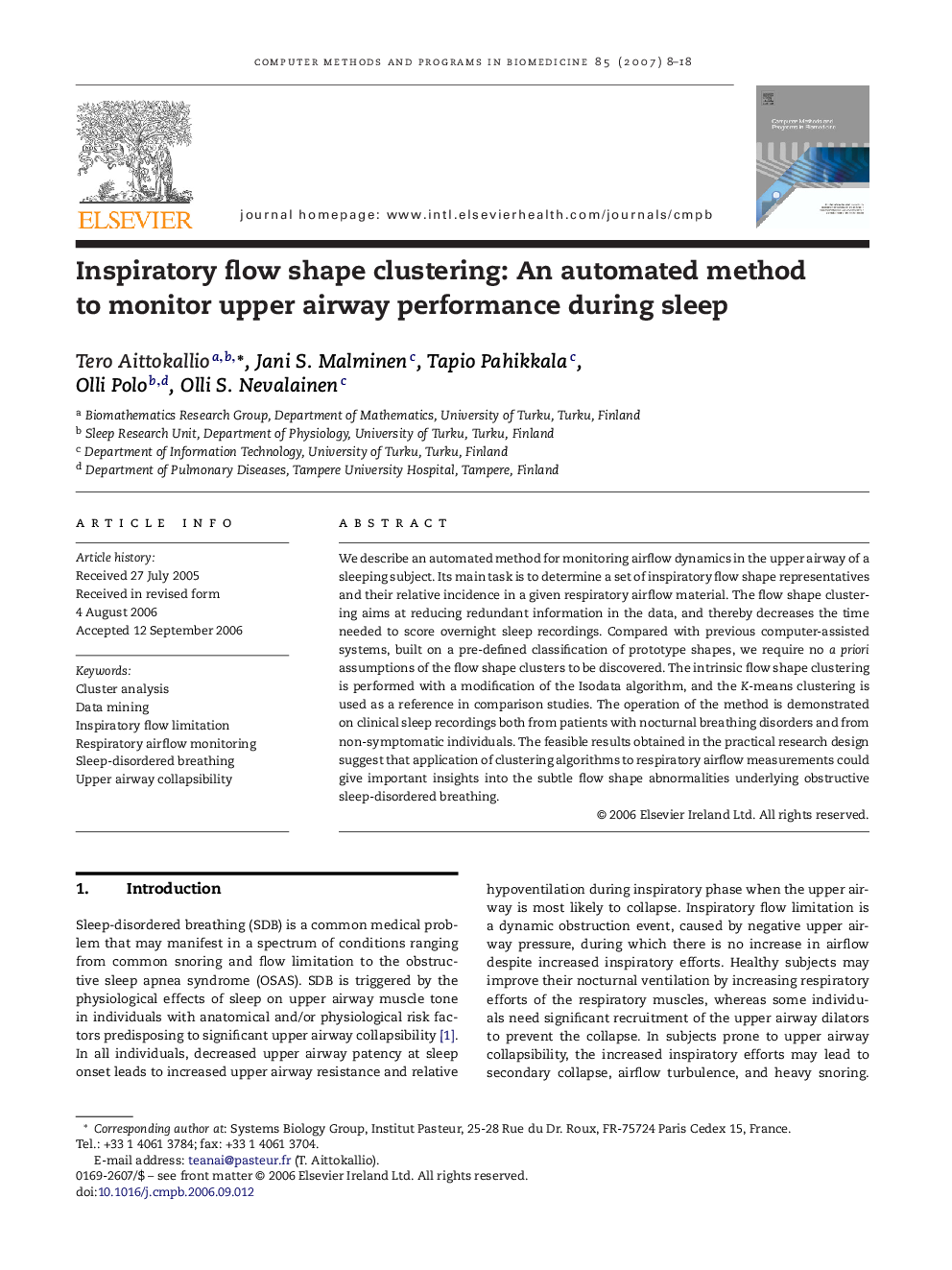| Article ID | Journal | Published Year | Pages | File Type |
|---|---|---|---|---|
| 469379 | Computer Methods and Programs in Biomedicine | 2007 | 11 Pages |
We describe an automated method for monitoring airflow dynamics in the upper airway of a sleeping subject. Its main task is to determine a set of inspiratory flow shape representatives and their relative incidence in a given respiratory airflow material. The flow shape clustering aims at reducing redundant information in the data, and thereby decreases the time needed to score overnight sleep recordings. Compared with previous computer-assisted systems, built on a pre-defined classification of prototype shapes, we require no a priori assumptions of the flow shape clusters to be discovered. The intrinsic flow shape clustering is performed with a modification of the Isodata algorithm, and the K-means clustering is used as a reference in comparison studies. The operation of the method is demonstrated on clinical sleep recordings both from patients with nocturnal breathing disorders and from non-symptomatic individuals. The feasible results obtained in the practical research design suggest that application of clustering algorithms to respiratory airflow measurements could give important insights into the subtle flow shape abnormalities underlying obstructive sleep-disordered breathing.
